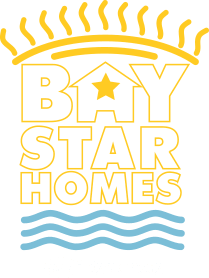GOOD TO KNOW
- Stormwater runoff carries too much sediment, nitrogen, phosphorous and bacteria into our local waterways. In fact, many of our region’s waterways have swimming and shellfish harvesting restrictions because they contain unhealthy levels of bacteria. Many of these waterways, including the Chesapeake Bay, also lack the dissolved oxygen necessary to support aquatic life.
- To clean up our waterways, the state has assigned a Total Maximum Daily Load (TMDL) to many of our waterways. A TMDL identifies how much pollution a body of water can receive while still meeting water quality standards.Get the full picture of waterway impairments in Hampton Roads here.
- Citizens play an important role in the cleanup effort. Did you know that by leaving dog waste on the ground you’re putting dangerous amounts of bacteria in our waterways and contributing to beach closures? Or that by raking or blowing leaves and yard debris into the street you’re actually harming our local fish and crab populations?
- Find your local watershed using this interactive map and learn more about how your actions have an impact.
GOOD TO DO
- Keep drains free of fats, oils and grease. Keep drains fat-free by canning cooking grease, scraping leftover food into the trash and catching food scraps in the sink.
- Test soil before fertilizing. A soil test provides a list of recommendations for soil amendments to help you make the right decisions for your lawn. However, it is important to understand the information it is providing and the limitations of such a tool.
- Seed bare spots. If you have bare areas, something must be wrong, and it is preventing the establishment of a turf. This is a problem because you can continually lose your soil. First test your soil testing to see if it needs any soil amendments and then look into different ground covers to stabilize the soil.
- Plant native plants. Native plants don’t require wasteful watering, fertilizing or pesticides. Planting natives also restores wildlife habitat for birds and butterflies.
- Keep grass and yard waste out of the street. Know your locality’s collection schedule. Only place leaves and yard debris out at the designated time and know the collection requirements (ex. bagging, placement, etc.). Keep loose leaves and yard debris out of the street so that they don’t get washed or blown into the storm drain, which will cause flooding.
- Don’t feed the geese. Feeding geese encourages them to stay in an area longer than they would if they had to go scavenging for their own food. While lingering around, geese feces – full of bacteria – is left on the ground, only to get washed into the waterway the next time it rains.
- Don’t treat the toilet like a waste basket. It’s a toilet, not a trash can! You’ll save your pipes (and avoid a costly visit from the plumber) by putting paper towels, disposable wipes, feminine hygiene products, paper towels, etc. in the trash where they belong.
- Scoop, bag and trash dog waste. It’s not a fertilizer. It is raw sewage that releases bacteria and nitrogen into our waterways. When pet waste is left on the ground, it gets washed into the storm drain and into our waterways, and a little pet waste goes a long way. A day’s waste from one large dog can contain 7.8 billion fecal coliform bacteria, enough to close 15 acres of shellfish beds and contribute to beach closures!
- Pledge to make your home a “star.” Help protect local waterways by joining one of the many residential watershed protection programs in Hampton Roads. Find one in your neighborhood using this interactive map or download the PDF version.
- Contact your local stormwater representative. For inquires related to flooding, stormwater or storm drains, or to report illegal dumping into the storm drain or street, please contact the stormwater representative from your locality at the number listed below.

